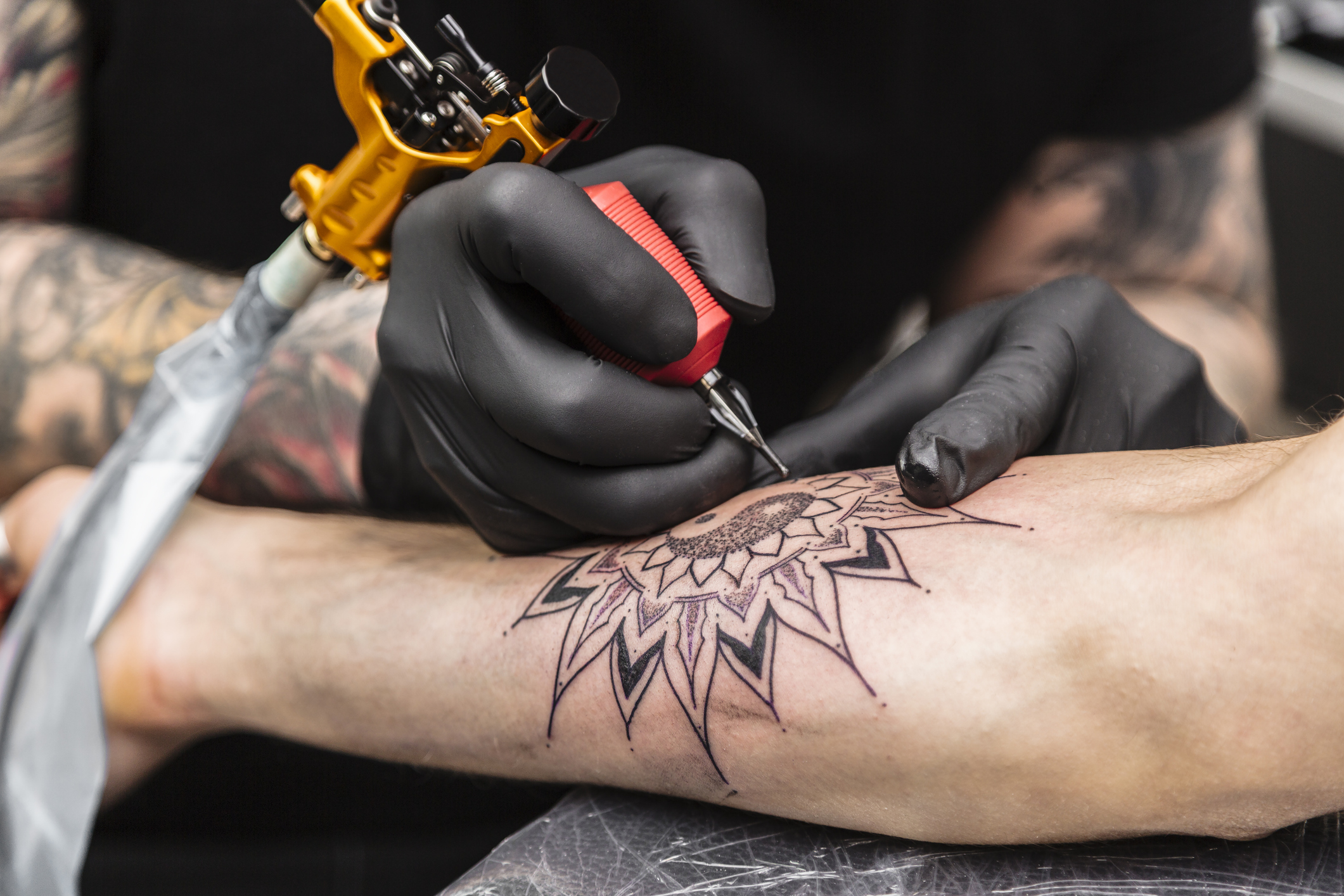
Tattoos are a form of body art that symbolizes personal stories, beliefs, important memories, emotions, or life experiences for the person wearing them. Nowadays, getting a tattoo in the U.S. is common and generally considered safe for people with normal clotting function.
Get Copay Assistance for Hemophilia
However, for individuals with hemophilia, getting a tattoo may pose additional risks and challenges. Even though medical providers often discourage people with bleeding disorders from getting a tattoo or piercing, people may still decide to get them anyway.
According to HemAware (The Bleeding Disorders Magazine), people with hemophilia can safely get a tattoo by taking appropriate precautions. This article highlights the potential risks of tattoos for hemophilia patients and what precautions they can take to avoid complications.
Hemophilia and Tattoos
Hemophilia is a rare genetic bleeding disorder. In this disease, minor injuries can become potentially dangerous for a person with hemophilia due to a lack of clotting factors in their body.
Similarly, tattoos can also raise the chances of infection and significant bleeding in these individuals since the procedure used to make tattoos creates open wounds when the needle repeatedly punctures the skin to insert ink.
What Are the Possible Risks of Tattoos for People With Hemophilia?
If you have hemophilia, you should know the risks and concerns associated with tattooing. Some of them are as follows:
Excessive Bleeding
Anyone can experience bleeding while getting a tattoo. But, if you have hemophilia, you can bleed longer due to a lack of clotting factors. Excessive and prolonged bleeding is the biggest concern for hemophilia patients and, in severe cases, makes it difficult for the tattoo artist to continue and finish the process.
Bruising and Hematomas
Since it is difficult for hemophilia patients to form clots, bleeding under the skin can cause significant bruising and hematomas. This can slow down the healing process and affect the appearance of the tattoo.
Risk of Infection
The risk of infection also increases in hemophilia patients after getting a tattoo because the decreased ability to clot slows down the healing process. As a result, wounds created by tattoo needles take longer to heal.
Furthermore, the U.S. Food and Drug Administration (FDA) has reported cases of ink contaminated with bacteria or mold that can cause infections. If you get a tattoo in an unhygienic environment, your chance of getting an infection increases.
Allergic Reactions and Keloids
Some people with hemophilia may become sensitive to the pigments in the ink and experience allergic reactions during or after the tattoo procedure. If you have sensitive skin, you may also develop dermatitis, a form of skin irritation.
Similarly, some hemophilia patients may develop raised scar tissue near the tattoo, called keloids. Hence, it is recommended that you weigh the potential risks and benefits before getting a tattoo.
What Precautions Can You Take If You Have Hemophilia and Want a Tattoo?

Here are some precautionary steps that can help you get through the tattooing process as safely as possible:
1. Consult With a Medical Professional
If you have decided to get a tattoo, always consult with your medical professional, especially a hematologist. They will provide guidance about your current condition by assessing the severity of your hemophilia and advising you on whether getting a tattoo is safe or not.
2. Pre-Treatment With Clotting Factors
Always get pre-treatment with clotting factors before your tattoo appointment. This will help your blood clot normally and reduce the risks of excessive bleeding during and after the tattooing process.
It is recommended that an infusion be taken an hour before the tattoo procedure to maintain optimal factor levels.
3. Research and Choose an Experienced Tattoo Artist
Not all tattoo artists have experience in working with hemophilia clients and managing bleeding incidents during the tattooing process. Therefore, you should carefully look for an expert tattoo artist who uses sterile equipment and disposable needles and follows strict cleanliness procedures to minimize the risk of infection.
4. Choose Simple and Small Designs
If this is your first time getting a tattoo, consider choosing a simple and small design. This will limit the time you spend getting the tattoo and reduce the risk of bleeding. Additionally, smaller tattoos take less time to heal, and bleeding can be more easily managed.
Get Financial Assistance
What Should You Do After Getting a Tattoo?
The steps you take after getting your tattoo are just as important as the ones you take beforehand. Once you get a tattoo, you should follow the appropriate aftercare instructions to minimize the risk of infections or irritations. For example:
- Use water or saline solution to clean the area carefully twice a day.
- Avoid rubbing or scrubbing the tattoo area.
- Avoid swimming and sun exposure until your tattoo has healed completely.
- Moisturize the tattoo area several times a day.
- Contact your doctor if you have an allergic reaction, swelling, or redness in the tattoo area.
Conclusion
Hemophilia patients can safely get tattoos with careful planning and consultation. However, the risks will vary depending on their disease severity.
REFERENCES:
- National Blood Clot Alliance. (2022). Can I get a tattoo? – Blood Clots. Blood Clots. https://www.stoptheclot.org/faq/can-i-get-a-tattoo/#:~:text=It%20is%20not%20recommended%20to,3%2D6%20months%20of%20treatment.
- Tattoos: Understand risks and precautions. (2024). Mayo Clinic. https://www.mayoclinic.org/healthy-lifestyle/adult-health/in-depth/tattoos-and-piercings/art-20045067
- The Haemophilia Society. (2024). Can I get a tattoo or piercing if I have a bleeding disorder? – The Haemophilia Society. https://haemophilia.org.uk/can-i-get-a-tattoo-or-piercing-if-i-have-a-bleeding-disorder/
- Hemaware. (2013). Body piercings and bleeding disorders. HemAware. https://hemaware.org/life/body-piercings-and-bleeding-disorders
- National Blood Clot Alliance. (2022b, September 27). Can I get a tattoo? – Blood Clots. Blood Clots. https://www.stoptheclot.org/faq/can-i-get-a-tattoo/#:~:text=It%20is%20not%20recommended%20to,3%2D6%20months%20of%20treatment.
- Body Art Safety & Risks for Bleeding Disorders | Adults. (n.d.). https://stepsforliving.bleeding.org/staying-healthy/physical-health/body-art/adults
- Czarielle, A. (2023). There’s a Right Way to Get Tattoos and Piercings With Hemophilia. Hemophilia News Today. https://hemophilianewstoday.com/columns/theres-right-way-get-tattoos-piercings-with-hemophilia/
- Holbrook, J., Minocha, J., & Laumann, A. (2011). Body piercing. American Journal of Clinical Dermatology, 13(1), 1–17. https://doi.org/10.2165/11593220-000000000-00000
- Kaatz, M., Elsner, P., & Bauer, A. (2007). Body-modifying concepts and dermatologic problems: Tattooing and piercing. Clinics in Dermatology, 26(1), 35-44. https://doi.org/10.1016/j.clindermatol.2007.10.004












